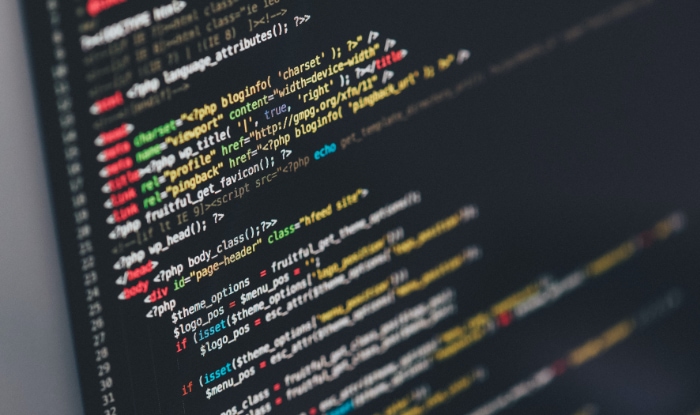Coding vs. Scripting: What’s the Difference?

If you're trying to learn coding on your own, you might've come across a lot of material on the internet that uses the terminologies “coding” and “scripting” interchangeably. And since you never had anyone to guide you through this jargon, you might've thought these two terminologies refer to the same thing.
Well… They don't!
Coding and scripting may seem synonyms since they both seem to describe using a language to program stuff on a computer, but they're not. While their difference is subtle, it is still essential to know if you eventually hope to become a programming expert.
Luckily, we're here to help! We'll tell you exactly how these terminologies are different, so you can get your jargon straight and come across as a real professional to your clients (or so you can avoid embarrassing workplace moments).
What Is Coding?
Let's start our discussion by talking about what coding is. Coding is essentially our way of communicating with computers (that explains why we use programming “languages” to write code).
Writing code involves instructing your computer on what to do in different situations. Think about, for example, how you came across this article.
You must've clicked on this website's link on your Google results page (hopefully, it was the first page).
How did the website open up with a simple click? How do these “buttons” work at all? I mean, they don't have a physical presence in this world. They only exist as 2-D visuals on our screen's display.
Well, the answer is coding. Through coding, you tell your computer what a button is and what it is supposed to do when clicked.
But that's not all! You can create websites, smartphone apps, software, and more from scratch through coding!
Virtually everything you see on the internet, all your favorite apps, websites, and software like Google, Facebook, TikTok, and more, is enabled by code.
How does it work, you ask? Well, coding uses particular languages to communicate instructions to computers. Expert engineers made these languages to speed up the traditional way we used to communicate with computers, using transistors.
Without getting too technical, you must know that computers are complex machines made of several transistors (think of them as on/off switches). These states (of being on or out) are denoted using the numbers “1” for the control and “0” for the off switch.
So, when the transistors of a computer get a specific configuration of ones and zeroes, computers perform a particular function.
Note here that if you manually switch each transistor on or off, it would take an inconceivably long time for you to do anything on your computer. This is where programming languages come in. This is why they're essential!
What Is Scripting?

Scripting is a specific type of coding that enables us to create programs. Scripting is how programs know what to do. While coding enables you to make “static” programs, scripting allows you to develop programs that are more dynamic.
For example, creating a static website means not having many things changing; perhaps the website has static images and text that don't move around. On the other hand, creating an automated or dynamic website would mean you will see many things moving around (a lot of change).
This is enabled by scripting. How does scripting control programs? Well, it does so by APIs, which are codes that allow you to alter or control others' schedules.
A good way to understand this would be to think about your wanting to make an app that notifies users every morning about the day's forecasted weather.
Now one way to go about this would be to create your own way of getting forecasts. Alternatively, you can use someone's weather API (although do note that most APIs, or at least the good ones, require some form of payment.
Another popular function of scripting is automating stuff. The applications of this are virtually endless. You can, for example, create scripts that automatically delete trashed files from your PC after reaching a specific limit.
Another example of script-based automation would be to automatically send the message “I'm busy right now… I'll ttyl” each time you decline someone's phone call. This is the power of scripting.
Coding vs. Scripting: What's the Difference?

Now that we've discussed what coding and scripting are and discuss their inherent characteristics, it'll be easier for us to discuss and understand the crucial differences between them.
If you're still confused about the differences between these two terminologies, don't worry, we'll clear out all confusion in this section of the article.
In a nutshell, scripting is a type of coding. Meaning when we're talking about scripting, we're always simultaneously talking about coding; however, when we're talking about coding, we're not always necessarily talking about scripting.
For coding or programming, your choice of programming language will depend on what kind of instructions you want to send to your computer or what you want to achieve using those instructions.
For example, you will use a different programming language to make a website, and yet a different one again when you're trying to make a smartphone app. Scripting languages are only part of the whole set of programming languages that come under coding.
Additionally, scripting languages are read or interpreted by other programs as they run. On the flip side, coding languages are compiled before being run by other programs. This is also what makes coding languages so static.
Since they are collected before being run, they produce the same output each time; on the other hand, scripting languages are being interpreted as the program runs, meaning they can be scripted to do certain things under certain conditions and other stuff during different situations.
Summary
To summarize, coding is an umbrella term we use to describe any activity where programming languages are used to communicate instructions to computer devices.
Scripting, a term often misused interchangeably with the word coding, is simply a form of coding where the code is interpreted during a program's run time, making it more dynamic than other forms of coding, which are static (less room for change) since they're compiled before the program is run.


